How Technology is Shaping Volleyball Performance
Available in:
EN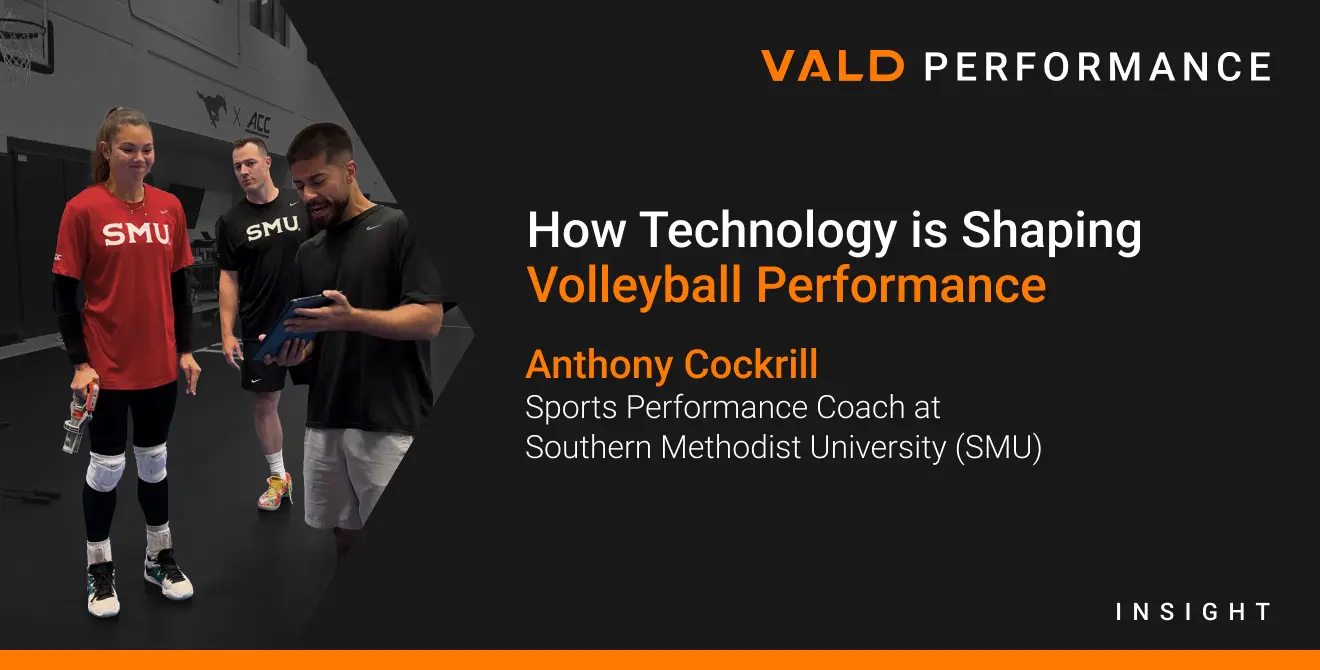
In 2023, Anthony Cockrill and his team integrated VALD's ForceDecks and DynaMo to fine-tune their approach to volleyball performance. With volleyball placing immense physical demands on athletes – particularly around jumping, hitting and overall explosiveness – technology has become an essential tool for profiling performance and guiding training decisions.
Anthony shared how integrating VALD's technology has streamlined his process, provided deeper insights into athlete readiness and enhanced long-term development.
What makes volleyball unique from a physical preparation standpoint?
While many sports share common traits, volleyball stands out due to the direct relationship between physical performance characteristics and sporting success. The ability to jump higher, hit harder and move dynamically can often determine individual and team performance.
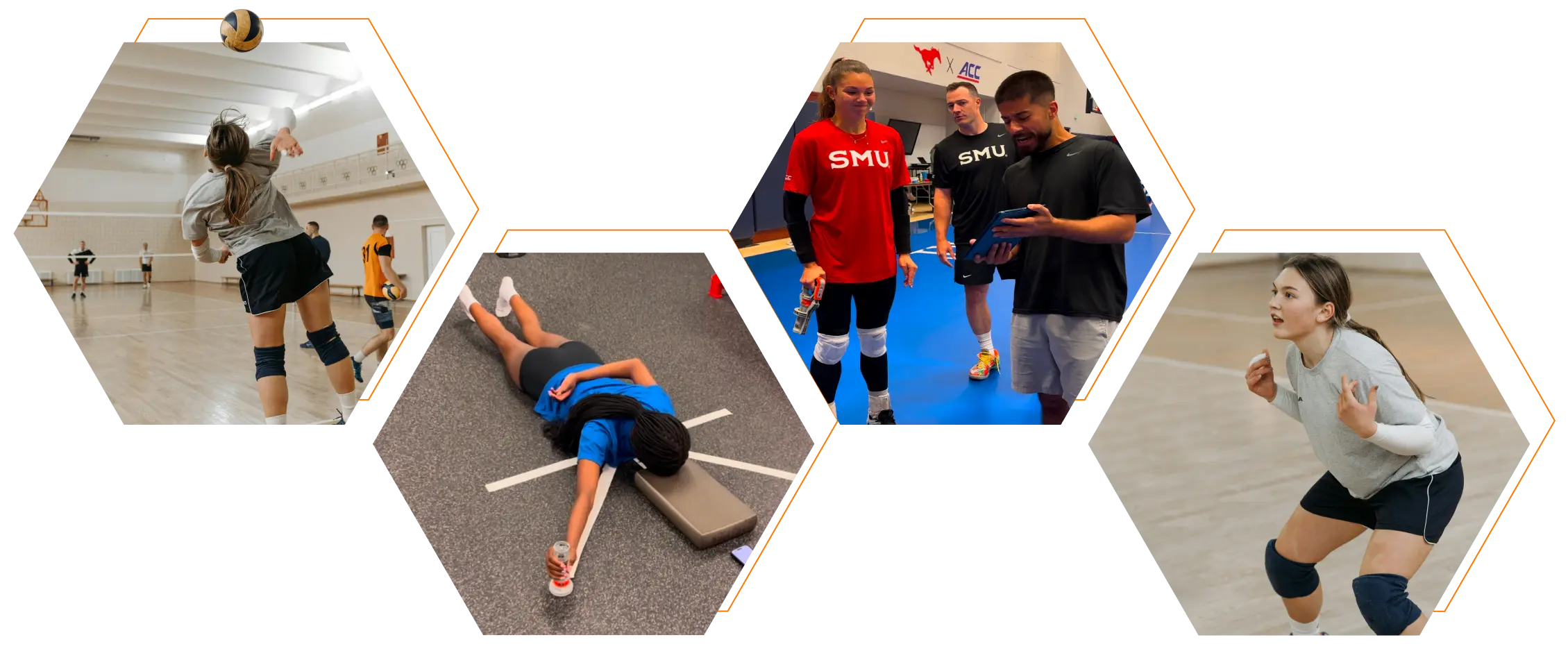
Unlike other sports (e.g., basketball), where performance may be attributed to a variety of constructs, volleyball rewards athletes who can consistently generate explosive force both in the upper and lower body. In volleyball, if you can outjump and overpower opponents, you immediately create a competitive advantage.
While many look at the “physicality” of sport from a contact or aggressive standpoint, I think about it as the physical characteristics that athletes possess that allow them to excel in their sport.
This focus on physicality means our training and testing have a direct relationship with athlete performance, making accurate assessment critical to our performance process. While technical skills are crucial, physical capabilities often separate the best teams from the rest.
…our training and testing have a direct relationship with athlete performance, making accurate assessment critical to our performance process.
How do ForceDecks and DynaMo integrate into your assessment and training process?
Technology plays a huge role in how we assess and guide training. ForceDecks allows us to track jump performance in detail, measuring variables like peak force, ground contact time and asymmetries. DynaMo, on the other hand, gives us a quick and easy way to assess grip strength, which serves as a simple yet reliable indicator of fatigue and overall readiness.
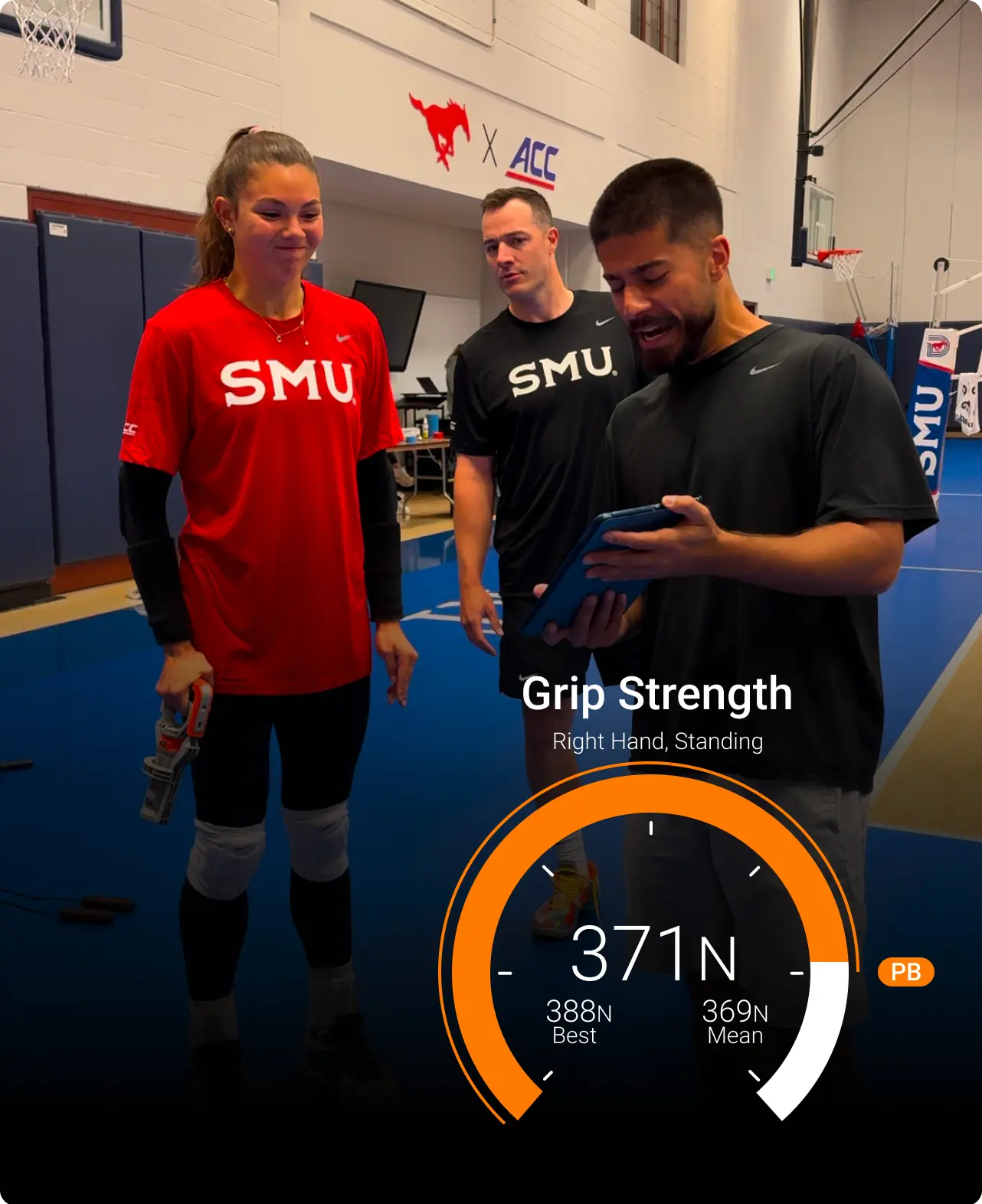
Pre-game grip strength assessment with DynaMo to assess overall readiness.
We use ForceDecks weekly to track changes in jump performance, paying attention to changes in metrics like reactive strength index-modified (RSI-Mod) and eccentric peak force. This helps us see how athletes are responding to training loads and if their output is improving over time.
A simple grip test can reveal a lot about nervous system readiness without taxing the athlete before a match.
DynaMo fits perfectly on game days because it’s fast and non-invasive. A simple grip test can reveal a lot about nervous system readiness without taxing the athlete before a match.
How do you balance in-season monitoring with long-term development?
In-season, the goal is to sustain performance while minimizing unnecessary fatigue. Our focus shifts away from heavy eccentric loading towards concentric-dominant work and overcoming isometrics. This approach allows us to keep force production high without excessive fatigue or muscle damage.

We use ForceDecks to monitor jump height and RSI-Mod weekly, but we reduce the volume of testing compared to the off-season. DynaMo grip tests become incredibly valuable during this time by providing immediate feedback on athlete readiness without adding extra stress.
What training styles do you follow, and how do you track their impact on performance?
Eccentric training is central to our off-season programming. It’s one of the most undertrained components in volleyball, but it plays a critical role in long-term power development and injury prevention.
During the off-season, we widen our metrics and conduct more comprehensive assessments every three weeks. Along with body composition tracking, we use a variety of force plate metrics to ensure athletes are progressing in all key areas.
We use ForceDecks to monitor eccentric peak force, eccentric phase duration and eccentric peak velocity during jump assessments. By tracking how well athletes handle eccentric loading over time, we can assess their progress and adjust their programming to ensure continuous improvement.
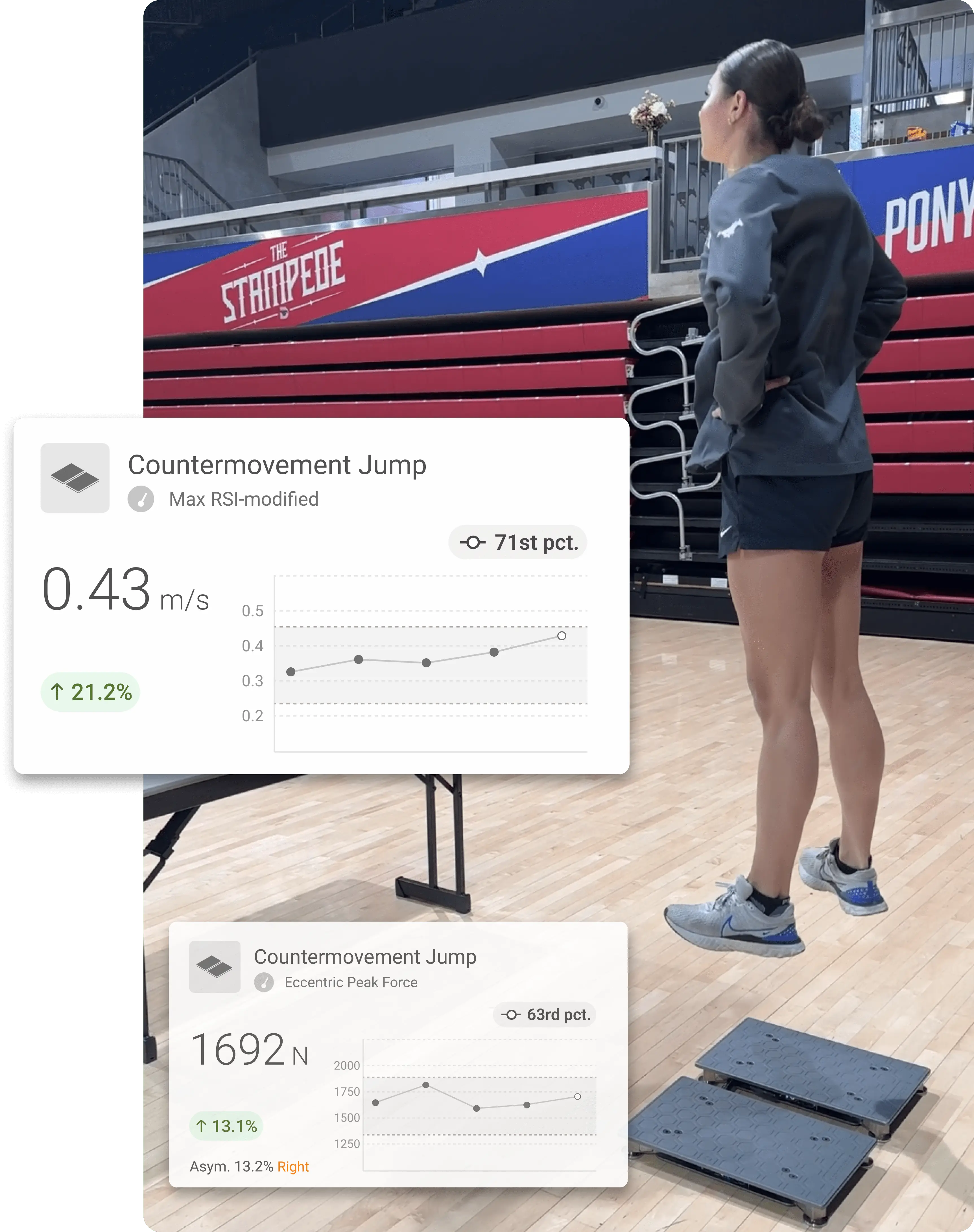
An SMU volleyball athlete performing a countermovement jump (CMJ) on ForceDecks, with longitudinal tracking of results displayed in VALD Hub.
We also look closely at the eccentric utilization ratio (EUR), comparing jump heights between the CMJ and the squat jump (SJ). Most often, our best athletes can jump around 10-20% higher with the CMJ than the SJ.
Ideally, we want to see both jumps improving throughout the off-season, with the gap between these jumps widening as athletes develop. This indicates a better utilization of eccentric forces for jumping.
…we want to see both jumps improving throughout the off-season, with the gap between [the CMJ and SJ] widening as athletes develop.
What has technology revealed that might have been missed with traditional methods?
Technology has been great as a feedback mechanism to see if what we’re doing in the weight room is transferring to their physicality on court. With an emphasis on eccentric training in the off-season, we use ForceDecks to ensure we can detect any changes in performance. Ideally, we look for small dips in performance that recover quickly, ensuring we are providing a quality stimulus for adaptation.
Without ForceDecks, we might have been less prescriptive with our athletes, giving everyone the same cookie-cutter training programs that leave some athletes overshooting, some undershooting and only a small group in the sweet spot.
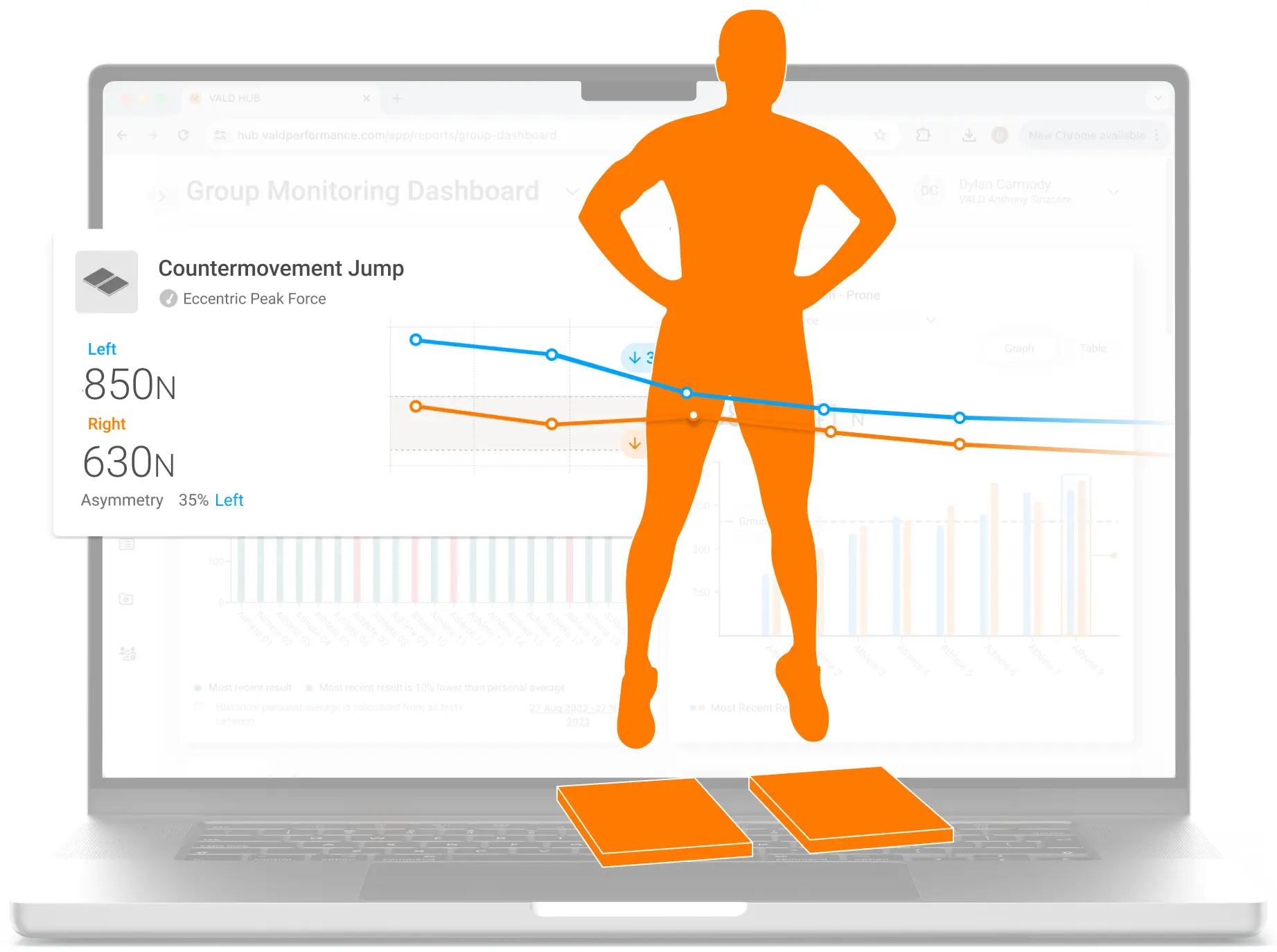
Without ForceDecks, we might have [left] some athletes overshooting, some undershooting and only a small group in the sweet spot.
Additionally, DynaMo strength testing has shown a strong correlation with overall fatigue. It’s one of the assessments where we can consistently get maximum effort, even if an athlete feels worn down. This makes it a reliable indicator of readiness when more complex tests might suffer from lower intent.
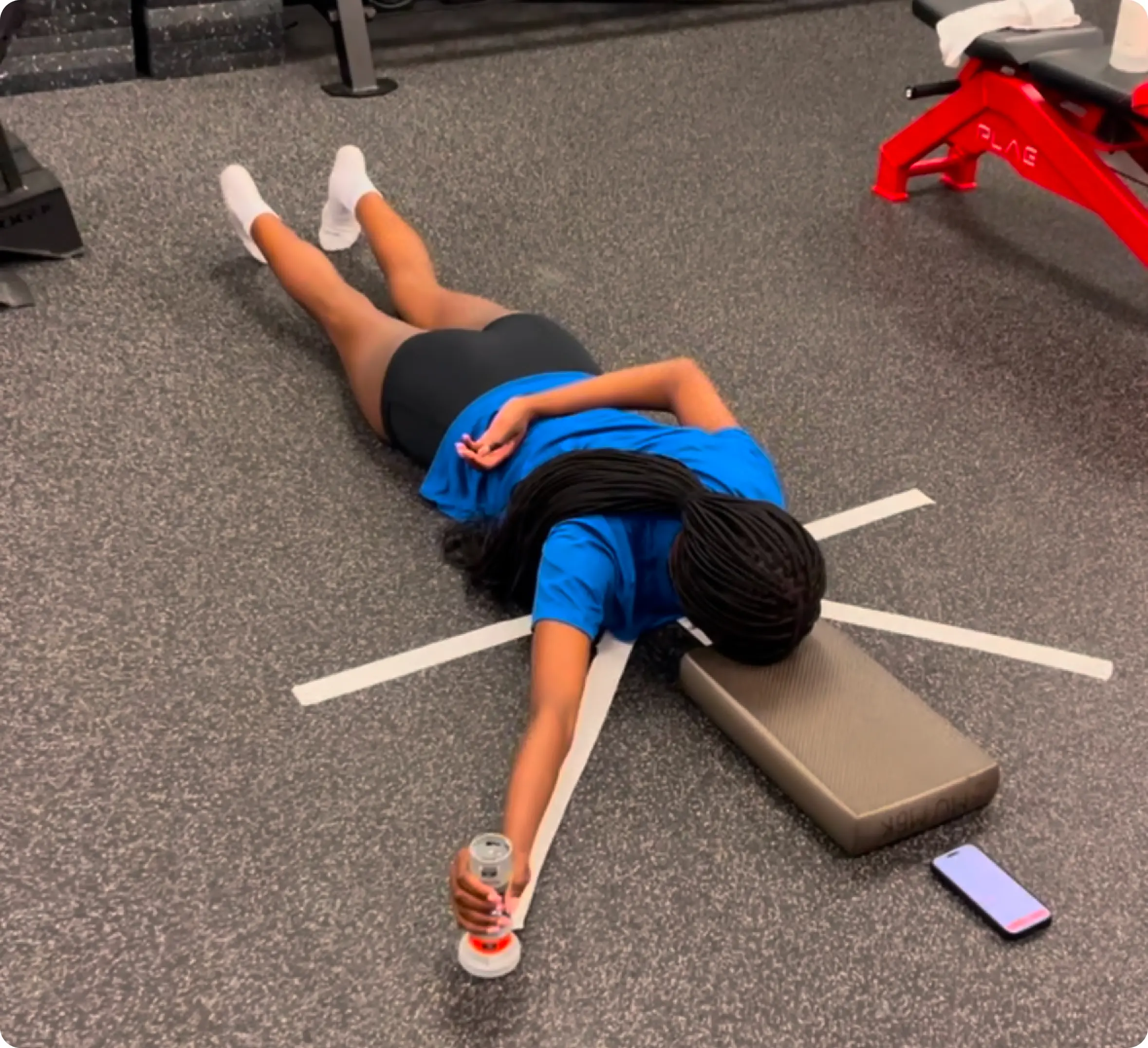
An SMU volleyball athlete performing an ASH Iso-Y assessment with DynaMo.
How do you approach load management throughout the season?
Our philosophy leans away from “load management" in the traditional sense. Instead, we prioritize managing life stressors like sleep, nutrition and hydration while using technology to inform our training responses and readiness.
ForceDecks and DynaMo provide data points that help us confirm when stress is high, but rather than only seeing “stress” as load on the court or gym, we take a holistic approach. If we see dips in performance, our first question isn’t whether to reduce training but whether the athlete is sleeping well, eating enough and recovering properly.
This approach allows us to keep pushing physical development even during the season, ensuring athletes continue to improve rather than plateau.
Final Thoughts
Integrating technology like ForceDecks and DynaMo has improved how I have trained volleyball athletes. By emphasizing eccentric loading, monitoring jump performance and using grip strength to track fatigue, we’ve created a system that not only maximizes performance but also enhances resilience and longevity.
The combination of data-driven insights and a focus on external stressors allows for a more holistic approach to athlete development, ensuring that physical gains translate directly to success on the court.
If you would like to learn more about how VALD’s human measurement technology enhances athlete readiness, supports long-term development and optimizes performance, please reach out here.
